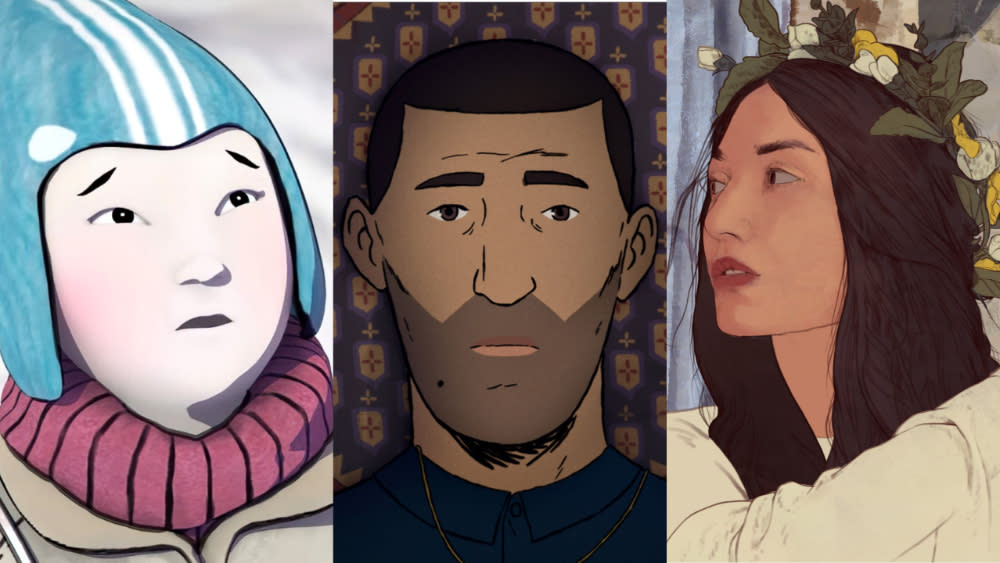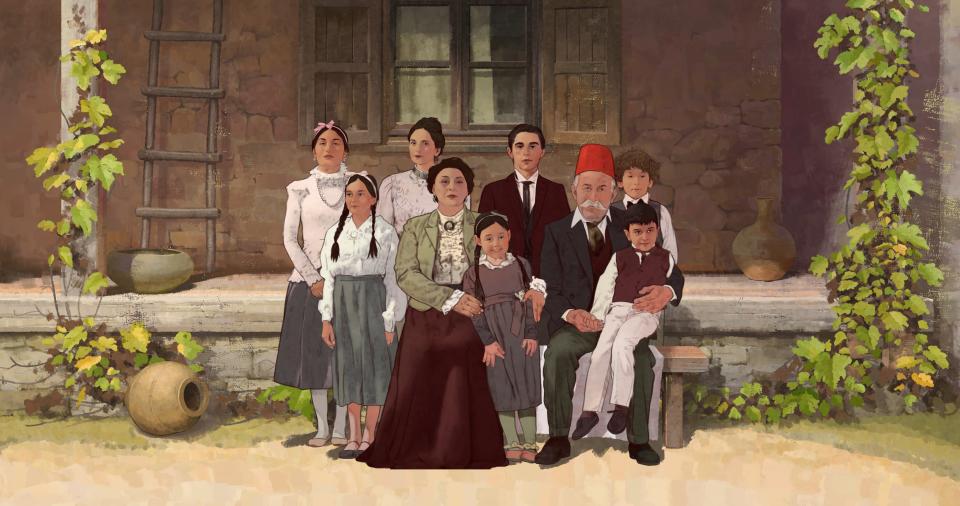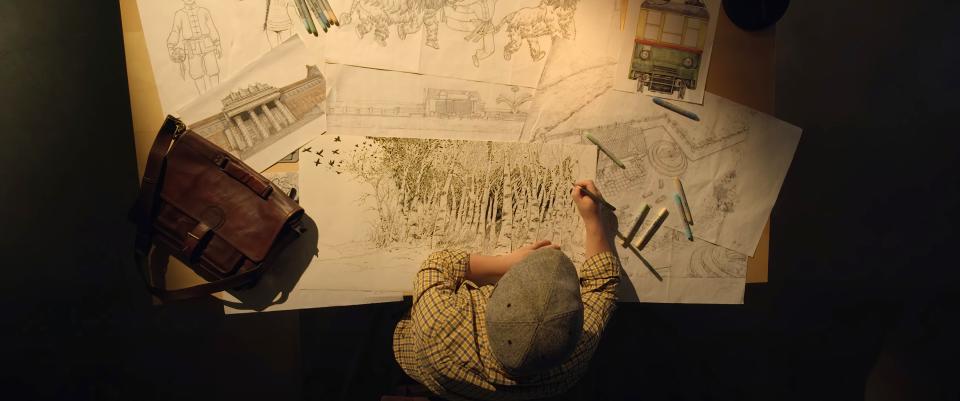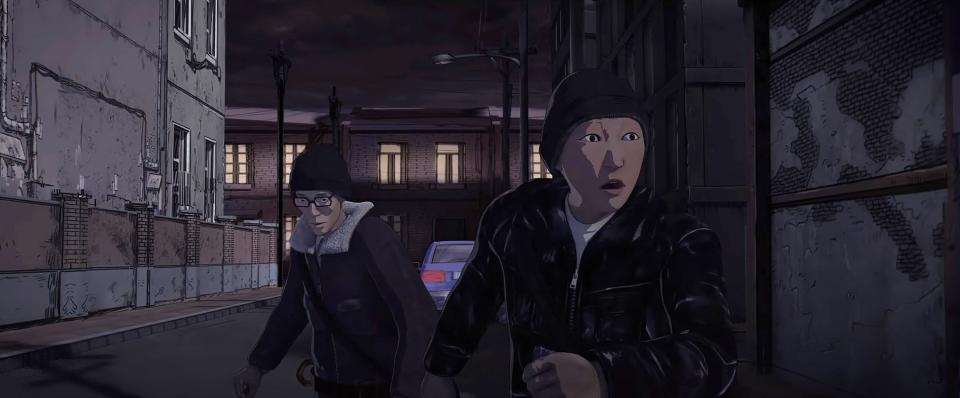The ‘Flee’ Effect: Could Two More Animated Docs Vie for Multiple Oscars?

- Oops!Something went wrong.Please try again later.
- Oops!Something went wrong.Please try again later.
- Oops!Something went wrong.Please try again later.
- Oops!Something went wrong.Please try again later.
.
Documentarian Inna Sahakyan had no previous experience working in animation prior to “Aurora’s Sunrise.” But the medium opened a world of possibilities when Sahakyan realized that there wasn’t enough existing archival footage to tell the tumultuous and inspiring story of Aurora Mardiganian, an Armenian genocide survivor whose harrowing ordeal became the subject of the silent era film “Auction of Souls.”
“Auction of Souls” was long considered lost, but the film — starring Mardiganian and based on “Ravished Armenia,” her personal account of the atrocities carried out by the Ottoman Empire in the early 20th century — resurfaced incomplete in the early 2000s. Fragments of “Auction of Souls” appear in “Aurora’s Sunrise,” as a reminder that a century ago Hollywood, and the American government, were invested enough in the Armenian plight as it was still unfolding to put on a major filmic endeavor. Sahakyan further built her interpretation of her heroine’s resolute personality from three interviews housed by the Zoryan Institute and the Armenian Film Foundation, organizations dedicated to the preservation of the historical memory of Armenians.
More from IndieWire
'The Flying Sailor' Finds the Beauty in History's Most Devastating, Non-Nuclear Explosion
2023 Oscars: How 'Avatar: The Way of Water' Could Make a Big Splash in the Craft Races
“After listening to her testimony, I understood that she was a very interesting character and that we didn’t know much about her, the world doesn’t know, and she is forgotten,” Sahakyan recently told IndieWire. “This film will give her a chance to return.”
But although “Aurora’s Sunrise” has its foundation in that substantial research, there were plenty of other aspects of Mardiganian’s journey that weren’t previously told onscreen. Animation would function as the connective tissue between all of the materials that Sahakyan collected.
“In dealing with memories, animation was the best tool because it gives the opportunity to use symbols, colors, to stress the story’s importance and at the same time to distance the audience from the horrors of what was going on,” Sahakyan said.
Earlier this year, “Flee,” the moving Danish portrait of a refugee’s life, highlighted animation’s potential as a medium that can serve the narrative needs of any premise in any genre when it was nominated for the Academy Awards for Best Documentary Feature, Best Animated Feature, and Best International Feature Film. This Oscar season, two more animated features — “Aurora’s Sunrise,” from Armenia, and “Eternal Spring,” from Canada — further confirm what “Flee” made so evident: Animation is capable of fully immersing the viewer in distinct time periods, geographical locations, and even memories, while giving more control to the filmmakers than a live-action production ever could. Like, “Flee,” both titles are their respective countries’ official Oscar entries for Best International Feature Film.
After searching for the most appropriate style in which to tell Mardiganian’s story, Sahakyan and her team came to the decision to shoot scenes with actors in front of a green screen in order to give reference to the animators. Based on that footage the artist created animation with limited movement — only some frames from each second are animated — known as paper cutout CG animation.
Throughout the process, Sahakyan had to learn to work with storyboards (a foreign concept for a director who had previously only worked in live-action), as well as animatics, the timing involved in animation, and managing a larger team across two countries: Armenia and Lithuania. In a sense, the making of “Aurora’s Sunrise” was a reeducation for Sahakyan. Pleased with the varied storytelling toolset that animation introduced her to, Sahakyan noted that “Aurora’s Sunrise” won’t be her last foray in the medium.

Bars Media
Dealing with the violence that plagued Mardiganian’s days running from the Ottoman Empire proved one of the most difficult tasks given the brutality she encountered. Sahakyan’s approach relied on a motif that acknowledges the terrible loses in a poetic manner inspired by Mardiganian’s recollection of her home life during childhood: Since Mardiganian’s father had a silk business for which he dyed cocoons in a variety of colors, Sahakyan decided to use cocoons as a symbol to represent each of the protagonist’s family members who perished during the genocide. The director combined this concept with a flight of creative liberty, imagining that perhaps Mardiganian and her siblings put on amusing plays on a makeshift stage at home. Each time one of her loved ones dies, they disappear from their backyard theater and turn into blood-red cocoons.
For Sahakyan, it was crucial to highlight the Mardiganian’s bravery not only to make it out of Armenia alive, but to face Hollywood as a young woman. During the multi-city distribution tour of “Auction of Souls,” she had to relive her trauma, answering questions from the press about what she had endured. She did it, as Sahakyan points out, so that the world would know what happened to Armenians and support the refugees left behind. As she entered the nascent film industry, Mardiganian took the first name Aurora (her birth name was Arshaluys), but refused to change her last name and continued to wear traditional Armenian attires, forcing those around her to accept her rather than changing.
Like Sahakyan and “Aurora’s Sunrise,” Toronto-based filmmaker Jason Loftus mined the aesthetic parameters for “Eternal Spring” from the project’s main subject, Chinese-born comic book artist Daxiong. Originally from Changchun City in northeastern China, Daxiong is a member of the spiritual practice known as Falun Gong, which was violently banned by the Chinese regime in 1999. After being tortured and persecuted, Daxiong eventually left China for the United States.
Loftus, whose media company Lofty Sky Entertainment also produces video games and animated programming, first came in contact with Daxiong while working on a kung fu-inspired interactive project for which Loftus felt his artwork was suited. Upon learning Daxiong’s personal story of persecution and exile, Loftus became intrigued. That the filmmaker had been interested in Falun Gong since he was a teenager, and that his wife and executive producer Masha Loftus is also a native of Changchun City, ultimately convinced him that this was a story worth telling now.
While “Eternal Spring” visually jumps off from Daxiong’s artistic perspective, the incident at the center of the documentary is Falun Gong’s hijacking of state-run Chinese television signals that occurred on March 5, 2002. Since Daxiong did not participate in this dangerous feat, the film follows him as he travels to meet some of the people, now living abroad, who pulled it off to in order to counteract the government’s false claims about their beliefs.

Telefilm Canada/Courtesy Everett Collection
A fan of titles such as “Waltz with Bashir” and “Tower,” Loftus thought that while animation works effectively in nonfiction storytelling, its use often came across as “an invisible hand because you don’t know anything about the decision making that goes into the creative process.” Therefore, he decided to take a mixed-media approach that shows how Daxiong himself engaged with the past through his craft. The animated sequences that bring to life the planning of the hijacking (of which, of course, there are no recorded material available) is interspersed with footage of Daxiong drawing in front of other Falun Gong members or working with the team at Lofty Sky is interspersed. The multilayered construction of the film provided Daxiong with a sense of healing and catharsis, as he helped other survivors express their memories.
“This was an opportunity to have the artistic process be part of the narrative where we have an artist who’s directly impacted by these events and he wants to face the trauma of being separated from his home,” Loftus told Indiewire.
What this decision meant however, is that both the shooting of the live-action segments and the creation of the animated ones had to happen simultaneously. They couldn’t lock the script, storyboards, or the animatic because the animated portions were evolving as Daxiong met with the other documentary subjects and exchanged experiences. For a small studio like Lofty Sky, the undertaking was a time-consuming and expensive labor.
“It was a bit of a leap of faith for us to be doing both at the same time,” said Loftus. “But we wanted to be able to capture people viewing his work, contributing to his work. We were just hoping it would all come together.:
Loftus agrees with Sahakyan that in dealing with the re-creation of traumatic situations, real-life footage can prevent the viewer from connecting on an emotional and intellectual level with the characters’ circumstances because of the shocking nature of the images. “Animation allows us to go around that obstacle,” the director added. “It’s a powerful medium to bring us into these otherwise very challenging subjects.” As proof, Loftus cites the 2016 book “Disaster Drawn: Visual Witness, Comics, and Documentary Form” by Hillary L. Chute, about the history of graphic novels in depicting real-life atrocities.
In comparison to a production from a larger studio, the entire team in charge of the animation for “Eternal Spring” composed of four people, including animation director David St-Amant. The small cohort of artists chipped away at the film, a collective passion project, while working on other projects at Lofty Sky.
In order to bring the texture and lines of Daxiong’s 2D illustrations into a 3D space, they developed a pipeline that entailed Daxiong storyboarding a scene, which then would be built on the Maya program as empty gray boxes showing different perspectives. The team would print images of those empty tridimensional spaces and then have Daxiong draw his own interpretation of the city. Then, his drawings would be scanned and draped onto the surfaces in the 3D plane. Animators were able to move the camera through the space and get the desired parallax, while having the texture/line work directly from Daxiong’s hand.

Telefilm Canada/Courtesy Everett Collection
Most of the animation in “Eternal Spring” deals with the preparation and execution of the hijacking. But there were two particular instances that Loftus believes “came straight from [Daxiong’s] heart.” In one of them he depicts an idealized vision of his childhood in Changchun City, depicted as a luminous, fairy-tale like moment. Another, more aesthetically elemental scene shows Daxiong running from his own brush strokes, which resemble black-and-white silhouettes, symbolizing the oppression he lived through.
Subconsciously, the creators also included minor stylistic elements that call to mind the mechanics of video games: For example, how a small avatar appears on screen to differentiate each speaker as we see their animated versions walk through the scenes.
Glad that “Eternal Spring” qualified for the same three categories as “Flee” at the Academy Awards — it met the 75 percent threshold necessary to vie for Best Animated Feature — Loftus believes that by including the artist as part of the animated narrative, his film evolves into an exploration of the role that art can play in trying to gain a new understanding.
Best of IndieWire
Sign up for Indiewire's Newsletter. For the latest news, follow us on Facebook, Twitter, and Instagram.


